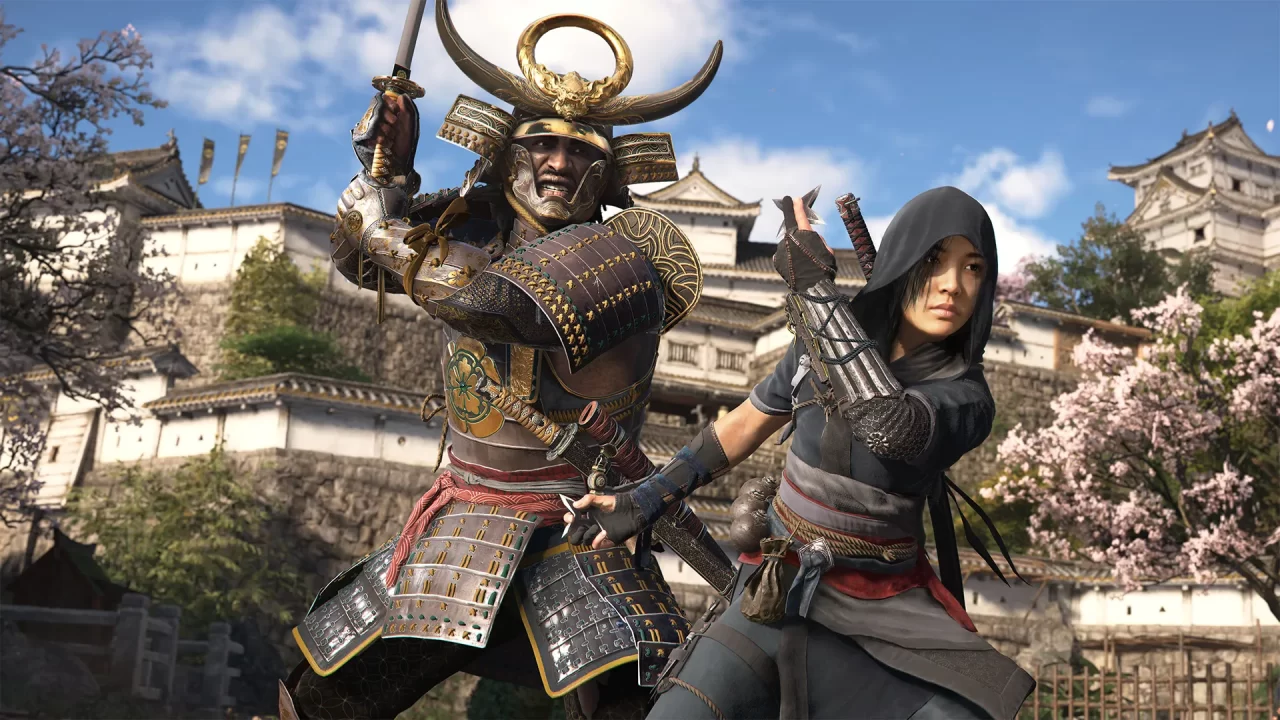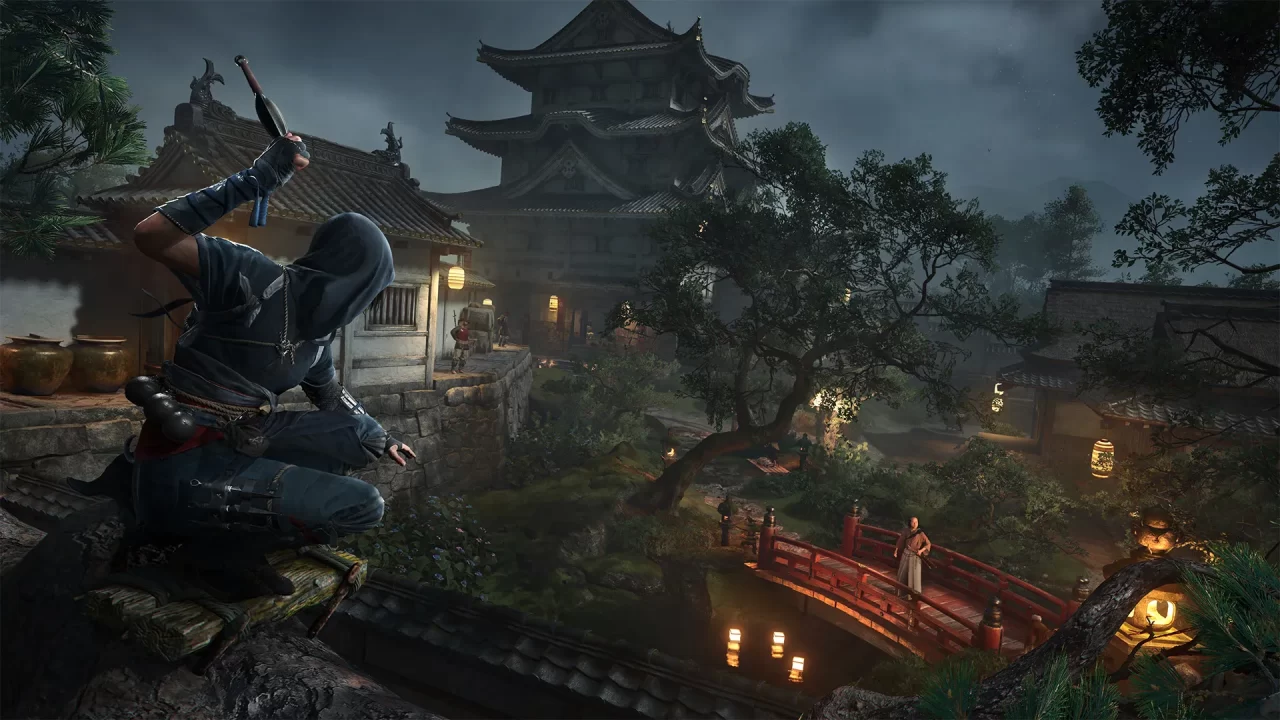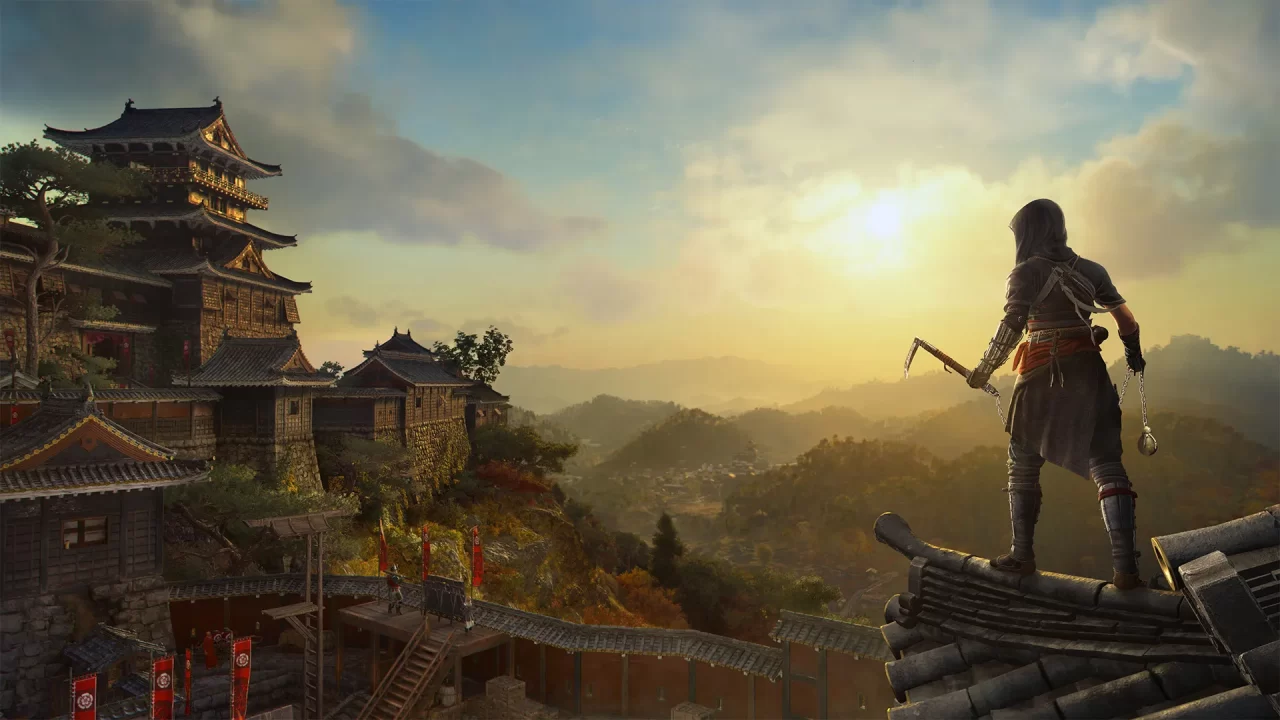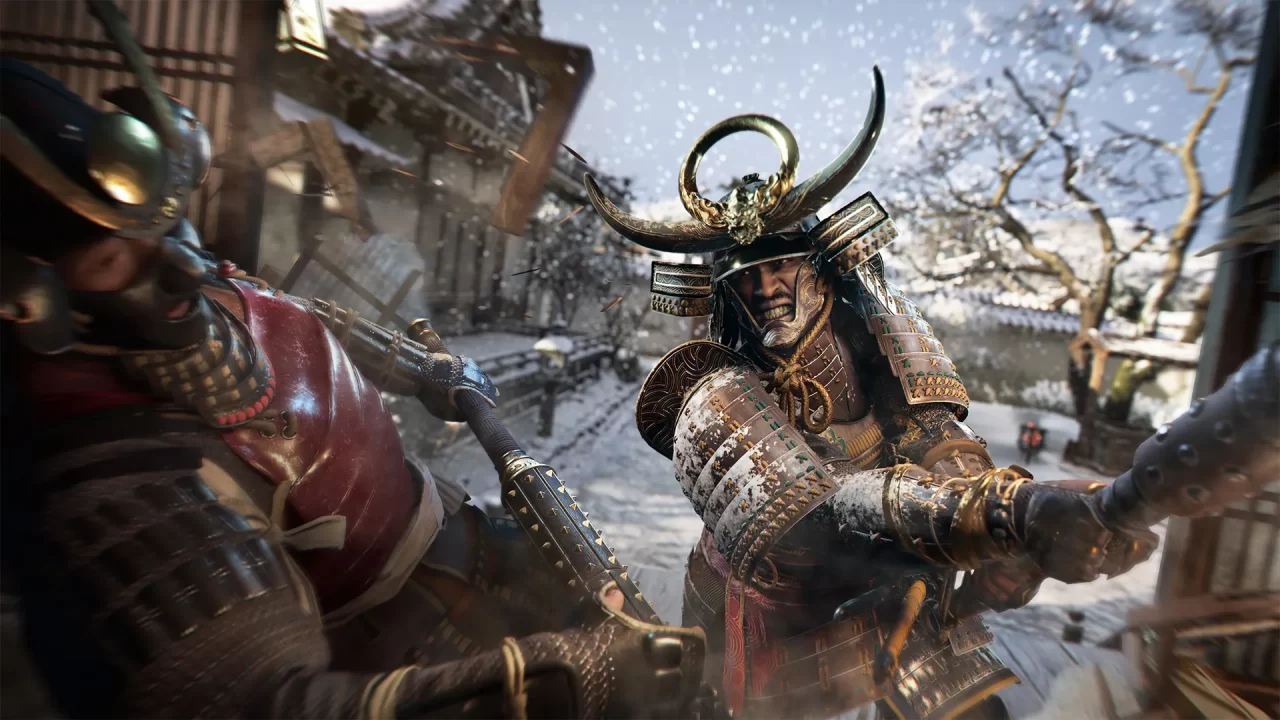It’s finally here! The Assassin’s Creed game that fans have long wanted and begged for before there was even a name or a team attached to the project. Assassin’s Creed Shadows at last brings the series’ fast-paced parkour stealth action gameplay to Feudal Japan. It’s set specifically in 1579, during the end of the Sengoku period, a particular time in Japanese history stained with civil war and strife among the populace.
You play as dual protagonists Naoe and Yasuke: two lost souls from different walks of life that ultimately come together under a shared cause. Naoe embodies the series’ classic gameplay tropes, scaling buildings, parkouring, and dispatching enemies quickly and efficiently before disappearing into the shadows. Yasuke, on the other hand, takes a much less subtle approach. As him, you can break down doors and break through enemies large and small with relative ease, all while wielding weapons as big as he is.
The choice of playing as both characters feels like Ubisoft wants players to have their cake and eat it too, appealing to classic fans while ensuring fans of the RPG titles (such as myself) don’t feel left out. For the most part, this gambit does pay off; Assassin’s Creed Shadows delivers some of the series’ tightest, most fun gameplay in years. However, certain choices make the game feel a little unfocused due to this new direction.
Assassin’s Creed Shadows starts by showing us how Yasuke, then known as Diogo, came to serve under Oda Nobunaga, a powerful Feudal lord or “daimyō.” He takes Yasuke on from Portuguese Jesuit priests, where he served as a bodyguard, to be a retainer (a samurai who serves exclusively under the lord of a clan as a military commander in exchange for boons such as land or wealth).
The action then switches to Naoe, daughter of Fujibayashi Nagato, a jonin or high-ranking ninja of the Iga clan. From here, you follow her journey from ninja-in-training to ninja by circumstance as the plot’s events force her hand. Now, she becomes Japan’s best hope to save it from the clutches of tyranny. Indeed, all of Act 1 of the story is Naoe’s perspective, and you’re confined to the region of Izumi Settsu to give you a taste of the open world and each facet of the gameplay before Yasuke rejoins the story and the full map opens up with you now able to freely switch between the two at will.
I see why they did it this way since Naoe very much embodies the core tenets of the Assassin’s Creed that everybody expects and fans enjoy, but it’s hard not to feel like Yasuke is an afterthought in this game. Not so much in the story, since he does go on his own arc(s) and has interactions and relationships throughout that are wholly separate from Naoe’s, but definitely when it comes to the gameplay.
Yasuke’s absolutely a force to be reckoned with in combat and can make short work of a lot of Assassin’s Creed Shadows‘ various enemies. However, Naoe’s no slouch in combat either, especially if you invest in the right skill trees and weapons. By the game’s end, they’re more or less on equal footing when taking on single opponents or many enemies at once.
Not only that, but by far the most enjoyable aspects of Assassin’s Creed Shadows‘ gameplay loop are heavily weighted in Naoe’s favor. Parkour, stealth, and yes, even combat in certain instances, become significantly more enjoyable when you’re playing as her as opposed to Yasuke. Ultimately, there were several moments while playing as Yasuke when I said to myself, “I could be playing as Naoe right now,” and doing so would have been the optimal experience.
It really is a shame, then, especially given the racist controversies surrounding Assassin’s Creed Shadows and Yasuke’s involvement in it, that Naoe is the star from a gameplay standpoint. The fact that Yasuke feels like a one-trick pony, with that trick being one Naoe can eventually get proficient at, leads to questioning why he is a second playable character and not just a major player in the game’s plot.
Speaking of the story, it’s a perfectly decent fare under the right conditions. Nothing you haven’t played, seen, or read before, but made more enjoyable by the strength of its characters, to a certain extent the writing, and the performances. Regarding those performances, that’s where “under the right conditions” comes into play. You see, before you start Assassin’s Creed Shadows, you toggle a few modes that affect both story and gameplay.
Guided Exploration mode dictates whether you want markers for every objective or hints at the general area of said objective. Canon Mode all but removes dialogue choices from the game, with both protagonists acting exactly how the story demands they should (the validity of that mode as an option is worthy of a separate discussion on its own). Finally, there’s Immersive Mode, which sets all characters to speak in their native tongues with native actors (Japanese characters speak Japanese, Portuguese characters speak Portuguese, and so on).
For the initial act of Assassin’s Creed Shadows, I switched between having Immersive Mode enabled and hearing the original English performances. I far and away prefer the Japanese and Portuguese performances that Immersive Mode provides. No disrespect to the actors involved with the original English performances, but there’s definitely a jump in quality when you play in Immersive Mode. True, while I don’t speak Japanese or Portuguese, the emotion and tone conveyed in the lines are much more impactful when not in English. Your experience may differ, but I would encourage turning Immersive Mode on if you are able/can stand reading subtitles for optimal enjoyment of Assassin’s Creed Shadows‘ story and characters.
If you’re already familiar with the Assassin’s Creed RPG entries (Origins, Odyssey, Valhalla), there’s not much that Shadows does in gameplay that you haven’t already seen. However, certain tweaks to the formula and a few new additions add just enough flavor so that it stands out. One such addition is the introduction of seasons.
Every so often, the season will change and bring about new gameplay opportunities, be they quests or enhancements to stealth, such as snowstorms to muffle your footsteps in winter or tall grass to crawl through in summer. These are novel additions and add quite a bit to the experience, both visually and practically. However, they can be quite short. It’s not clear what triggers them, but they seem to happen quicker if you use fast travel liberally. I wouldn’t say it’s necessarily a crutch, just something to be aware of once the full open world unlocks.
Perhaps the biggest new feature of Assassin’s Creed Shadows is the hideout. You unlock it fairly early in the game, and it serves as your base of operations throughout. It’s where all of your major allies congregate and where you can come to have your weapons and armor upgraded, with new buildings unlocking gameplay improvements, such as more scouts to gather resources or seek out objectives for you.
When working on the hideout, the camera moves to a top-down view and it essentially becomes a management sim. From here, you can upgrade buildings, construct new facilities, or house the adorable animals that you’ve found and pet in the open world so they can stay. It’s incredibly charming and a nice, relaxing break away from the otherwise intense violence and mayhem you get up to in the open world. However, be aware that the frame rate takes a big hit when you visit the hideout due to the built-in ray tracing.
It may sound as if I had more gripes than praise with Assassin’s Creed Shadows, but I truly enjoyed my time with it. It’s just that, with a series such as this from a historically controversial developer such as Ubisoft, it’s important to view Shadows with realistic expectations so you don’t get burned by what isn’t there and can instead appreciate where it excels.
The game is honestly satisfying in a range of ways: it’s graphically stunning with seemingly endless photo mode opportunities across the map (and that’s from someone who normally doesn’t care for photo mode), has consistently satisfying parkour, has some fluid animations not seen since Unity, provides great side quests to uncover (be on the lookout for the Yokai questline especially for a bonkers, wild ride), includes a hideout that’s fun to explore and manage, boasts some of the series’ best action RPG gameplay and especially combat, and finally great skills and tools to unlock and try out.
Special shout-outs have to go toward the soundtrack, which delivers quite an unconventional sound for this type of game, clearly inspired by the music of Kill Bill. Lots of screeching guitars mixed in occasionally with hip-hop beats make for a truly unique sound that helps to make Assassin’s Creed Shadows stand out sonically from its contemporaries.
Regardless of how you feel about Ubisoft as a whole, it’s wonderful to see Assassin’s Creed Shadows attain such critical and commercial success after such lambasting and endless harassment from the worst corners of the internet. Hopefully, the development team at Ubisoft Quebec can stand proud of the game they’ve made here that, despite my personal qualms, proves that taking risks in this industry is always a good move.






